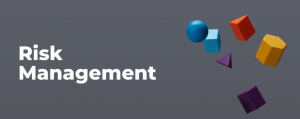
With increasing popularity to outsource FX technology at banks, Vikas Srivastava, Chief Revenue Officer at Integral, gets to the core of the matter and explores how to outsource the notoriously complex risk management technology stack.
Integral recently spoke on a Greenwich Associates Webinar discussing the key technology criteria an FX desk at a bank needs to compete. It came as no surprise that during an interactive polling session with the audience, senior representatives from regional banks cited risk management was the hardest component of the FX technology stack to outsource.
Getting risk management technology right is crucial and outsourcing such a critical component of the workflow has been historically hard to achieve.
Previously, only the very largest global players had large enough IT budgets to effectively digitize risk management and related functions – for the majority of banks, areas such as credit management, price-making, and hedging customer flow were still manual rather than automated tasks.
The good news is that technology advancements in recent years have made it possible to outsource risk management.
So what developments have made third-party software a viable option?
1. Cloud computing now offers banks flexible and high capacity environments at significantly lower cost
A bank must constantly adjust its FX strategy in the face of a changing environment and client needs. This drives similar needs for rapid adjustment in risk management workflow and is only possible with a nimble technology stack.
Cloud-deployed technology meets these criteria perfectly, offering fast deployment and ease of updating. Vendors whose technology is hosted in a cloud environment can ensure easy integration, scalability and configurability at low technological risk and cost to the client.
2. Better integration between pricing and risk management architecture
Banks understand that price-making and risk management are not silos, but in fact, benefit from a macro view and strategy. Technology vendors have listened closely to this feedback and now offer a better integrated pricing and risk management architecture.
Intelligent feedback between the two processes enables a bank to skew their pricing at a granular level in-line with their risk appetite, to increase / decrease their position or off-load with stop-loss / take-profit strategies when P&L targets are met. With better integration, workflow can be fully automated between pricing, credit and risk management, with updates taking place in real-time based on the risk criteria specified by the bank.
From event-based to time-based risk management, passive to active hedging strategies, and back-to-back hedging or sophisticated algo order management – the exacting trader can now model their risk management strategy as if using a custom-built proprietary technology stack.
3. Internalisation capabilities have become more configurable and sophisticated
As margins continue to shrink, having the option to internalise customer flow is increasingly important. Internalising across multiple bank branches and even across different dealing desks (think spot desk and swaps desk) can help reduce the transaction cost of hedging in the market.
Fortunately, internalisation is no longer something that is only accessible by the largest global banks – regional banks and retail brokers find that off-the-shelf solutions now offer rich configurability and institutional quality functionality.
Dealers can customise their warehousing models to a sophisticated and granular level, with the flexibility to automate the process, manually manage it, or switch between both modes in real-time.
4. Data science is helping users to view risk in a more sophisticated manner
The eFX market has data in abundance. The application of data science technology to enhance decision making and manage risk positions is more sophisticated than ever before. Fortunately, a regional bank doesn’t need to build proprietary quantitative data science software. Vendor products offer an intuitive view of complex data at significantly lower cost.
Many solutions offering data science modules process real-time inputs from a client’s workflow with the option to import data from third-party systems. Banks can use outsourced technology to get a holistic view across every tick pre- and post-order for improved measurement of TCA, liquidity provision and market decay.
Additionally, with the application of trade flow profiling, a bank can derive value from understanding client flow and build an informed risk strategy at a micro level.
——————————————————————————–
It’s clear advancements in recent years have made e-FX automation far more sophisticated. While the implementation of risk management software still takes consideration, outsourcing is now a real and viable option.

